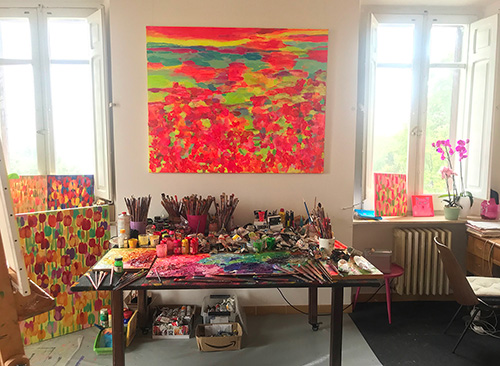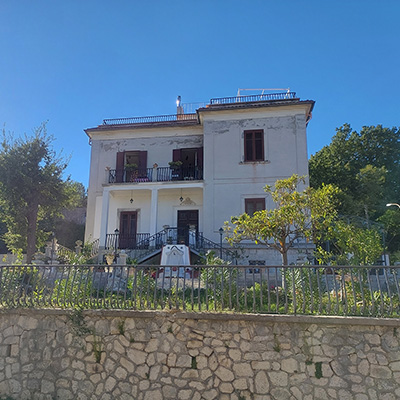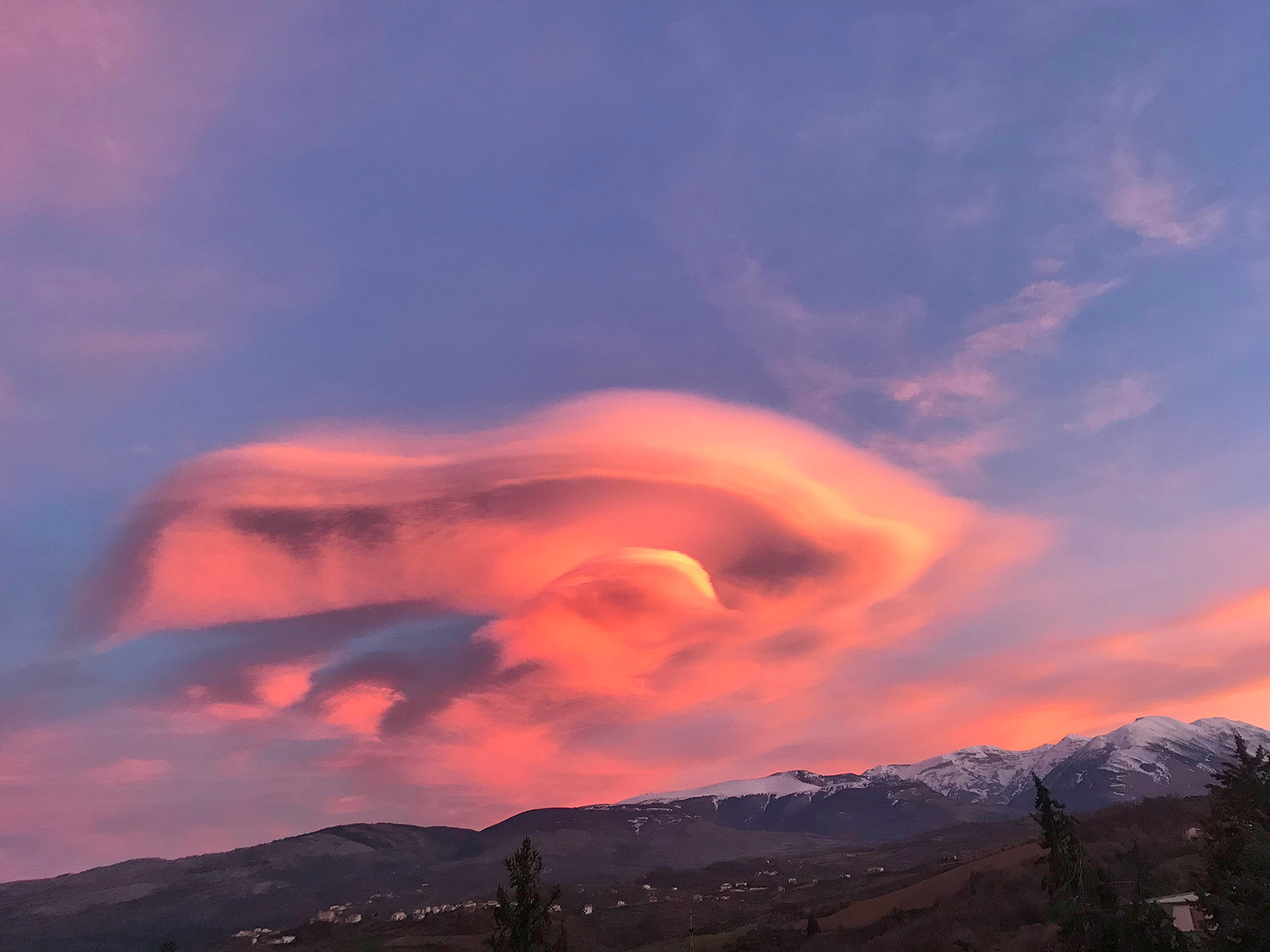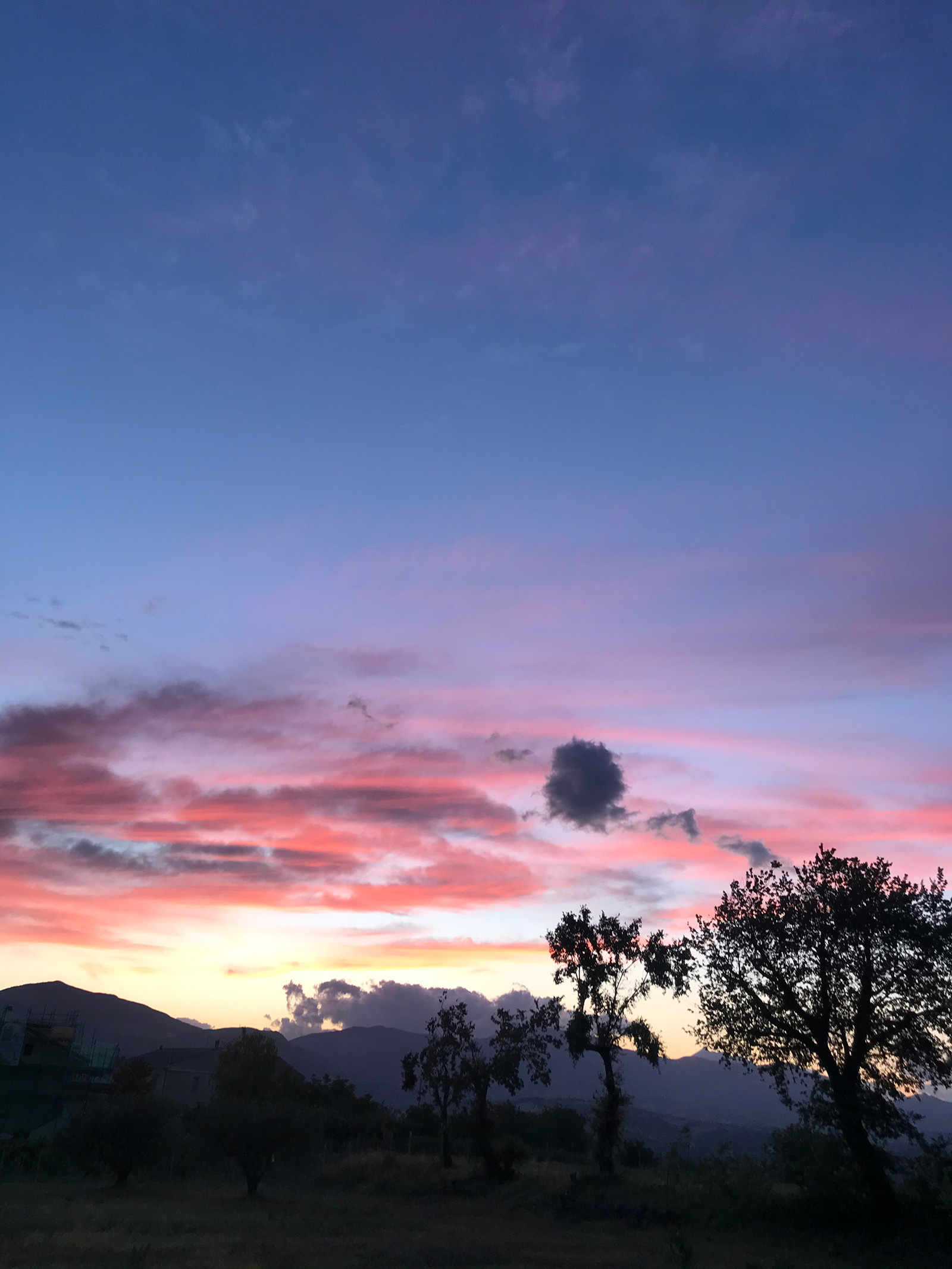I am happy to live here

Beata Murawska. For the past five years, she has lived permanently in Italy, which she describes as a flower paradise. A colourist, she is known for her large canvases depicting fields of tulips. In 1988, she graduated from the Faculty of Painting of the Academy of Fine Arts in Warsaw. She obtained her diploma with honours in the studio of Prof. Stefan Gierowski; supplement in printmaking – in the studio of Prof. Halina Chrostowska.
You bought a house in Italy. Why?
I had a travelling period in my life. I went wherever I could. When it came time for Italy, I fell in love with the country at first sight. This infatuation is still going on, and I would very much like it to last forever because such delight helps me in everyday life.
With sightseeing I stopped at Rome, I still have all of southern Italy to explore. I am terribly curious about Sicily, Naples. For now, I live in the north, but who knows, maybe I’ll move? Maybe I’ll end up in Calabria? I hear everywhere that the people of southern Italy are very open and friendly.


What have you visited recently?
Because of the pandemic, I travel little, only for my exhibitions. Two years ago, we spontaneously went to Florence – we couldn’t see anything, there were huge crowds and queues to the museums. Recently, I was in Florence again; I had an exhibition there. The impression is incredible, as if from a surrealistic dream – empty streets, shuttered museums, cafés and restaurants, life had stopped. Here in Liguria, it is also quiet now, there are no tourists because of the pandemic; the beaches are empty.
When did you leave Poland?
I moved here permanently five years ago. In Poland, I sold my house and closed all my affairs. Apart from contacts with galleries, of course.


You are well known in Poland. What is it like in Italy?
In Poland, my paintings sell very well. Since my studies, I have been connected with the Galeria Art, which was forced to move from Krakowskie Przedmieście to Powiśle. A great loss, it was a distinctive point on the cultural map of the capital. But Powiśle is also a great location.
In Italy, I am still developing an audience. For now, I am acquiring single clients. I don’t have a lot of opportunities here: I don’t know many people, and in the region where I live, there is no artistic life like in Rome or Milan.
I work with all methods, I participate in art fairs and in exhibitions. Today, there is the internet, the gallerists of the younger generation are looking for artists through Instagram – this is how a gallerist from Florence found me. In August, I had another exhibition, which I owe to contacts through Facebook. I applied to the San Remo gallery on my own.
I find partners and they find me.
Who supports you here in Italy?
I moved to Italy alone, my loved ones stayed in Poland. In Rome, there was my uncle, Professor Adam Maria Gadomski, a physicist, scientist and Polish activist, who died in March this year. I had contact with him, but somehow not with his family. But I have a fiancé here, Lello. He is a classic Italian. He is nothing like a Pole – he has a completely different character, he has an Italian temperament, and loves Italian cuisine, which is extremely important in his life.


Lello cooks?
Men in Italy cook more often than women. In addition, they cook brilliantly.
I can’t cook... (laughs) I mean, I thought I cooked well, but with him I turned out to be a culinary zero. And I can eat my pickled cucumbers or Polish roulades quietly in a corner, preferably when I am in Poland. In Italy, not at all. I spent a few weeks in Poland this summer, running a lot of errands, with little time for shopping or cooking. And then it occurred to me how much I missed Lello’s cooking. How much I missed the Italian flavours. I guess that means I’ve already switched over. And I can even give up those pickles.
What kind of cuisine is it?
Lello prefers the flavours typical of southern Italy. He has lived in Liguria for a few years, and is not very connected with the region, so I keep hearing that the local mozzarella has little in common with the real one from the south, and that I will only find out what real pizza tastes like when he takes me to Naples. The Italians I know carry with them throughout their lives these local loves and attachments to the regions they come from. Lello always refers to himself as a Roman.




Why did you choose Liguria?
It was a coincidence. I was looking for a place for myself through a German agency that sold property in Italy. I didn’t make a big business out of it, because now house prices have dropped terribly due to the tourism crisis caused by the coronavirus pandemic. But I took advantage of the fact that the owner is Polish, because at that time I didn’t know Italian yet. So far, I am not very good at it, even though I use Italian every day and I went to excellent Italian language schools in Tuscany’s Luca and in Rome. The Italian language is not easy at all once you get beyond a certain level of conversation or grammatical structure.
For me, Liguria is very Italian in its character, but Lello says there is a strong northern influence. Ligurians are not very laid back, there’s no dolce far niente. Their life among these hills is quite harsh, based on agriculture, raising livestock, and olive oil production. They are a bit like our highlanders – tough, hard-working, known for their exceptional thriftiness and reserved temperament. Not very outgoing, definitely different from the people in the south of Italy.
In Liguria, you paint a little differently than you used to.
Indeed, my trademark is intense colours and flowers, especially tulips. The colours and flowers have stayed, but I paint more landscapes here. Although I had already started to paint landscapes in Poland, before moving to Italy. I like painting flowers, and among flowers, I love painting tulips. It’s so very me. I came up with this motif years ago, and I even see that I have imitators today. But I was the first to do it in Poland. And I continue these tulip variations to this day.
Why tulips?
This is a story from the grey Poland of the mid-1980s, when I was studying at the Academy of Fine Arts in Warsaw and when everyone painted grey compositions. That was the fashion at the time. And during this grey period, I met a diplomat, a Dutchman.
He was infatuated with me, I was definitely less so with him, because I was not thinking about serious plans at that time. And so, my “flying Dutchman” ended up flying back to his country and from there, he sent me a big basket of red tulips. It was February, winter, gloomy, dark, such a sad time of year, so this gesture, this huge basket of flowers, made an extraordinary impression. And so, tulips became a part of my life, they stuck in my head, and I am still trying to recreate them from the past in one form or another.
Well, you’ve also been painting flowers “in a different form” lately.
Now I paint pansies, but also my various imaginary flowers. These unrealistic, “paradise flowers”, I would say. I am inspired by Liguria because it is a land of flowers. Here, where I live, something is in bloom all year round: bougainvilleas, camellias, oleanders, and various other extremely colourful flowers that we grow in greenhouses. In Poland, they need special care, but here, they spread in bunches like roadside weeds. Cacti are also in bloom here; these giant flowering aloe vera giants and spiny prickly pears impressed me greatly. We have the name L’autostrada dei Fiori for a reason.
And that fragrance! The first thing that struck me here, and that I remembered after seeing my current house, was the amazing fragrance! So sweet! I thought then that it could only smell like that in paradise.
So, by ending up in Liguria, you ended up in paradise?
Yes, it is beautiful, picturesque, flowery, and smells of paradise here. I am happy to live here.
















